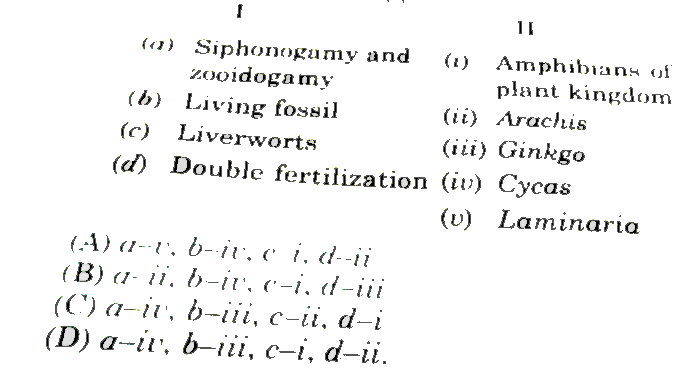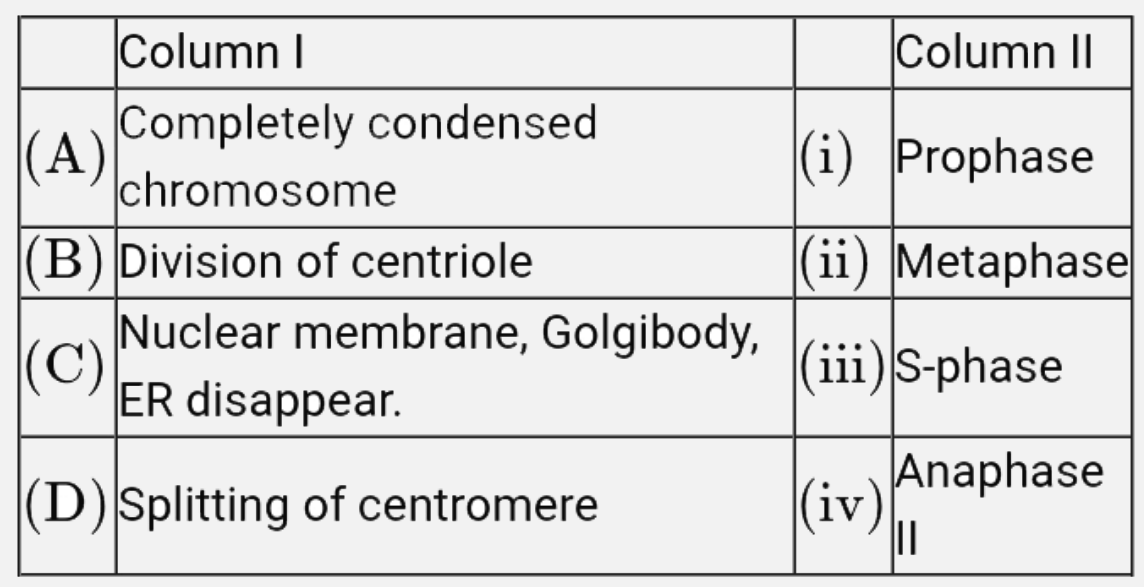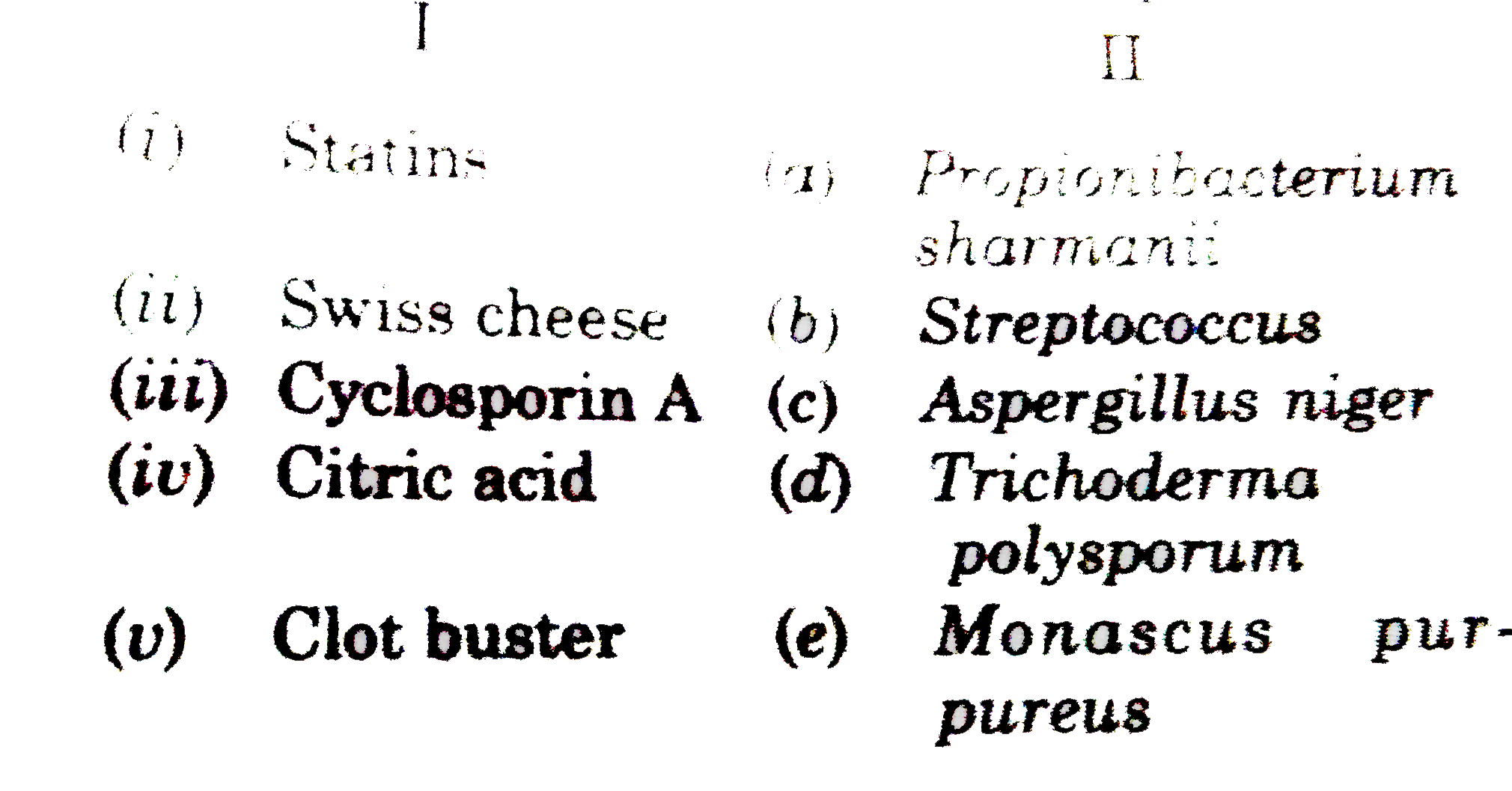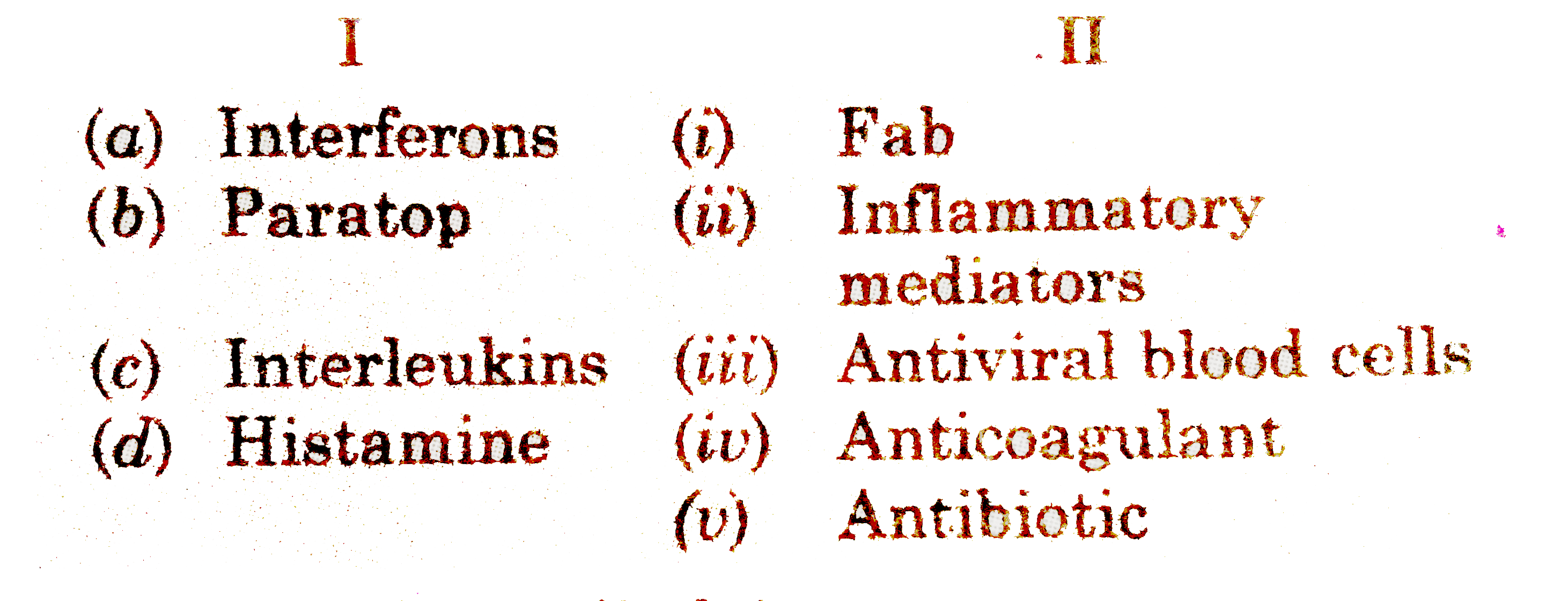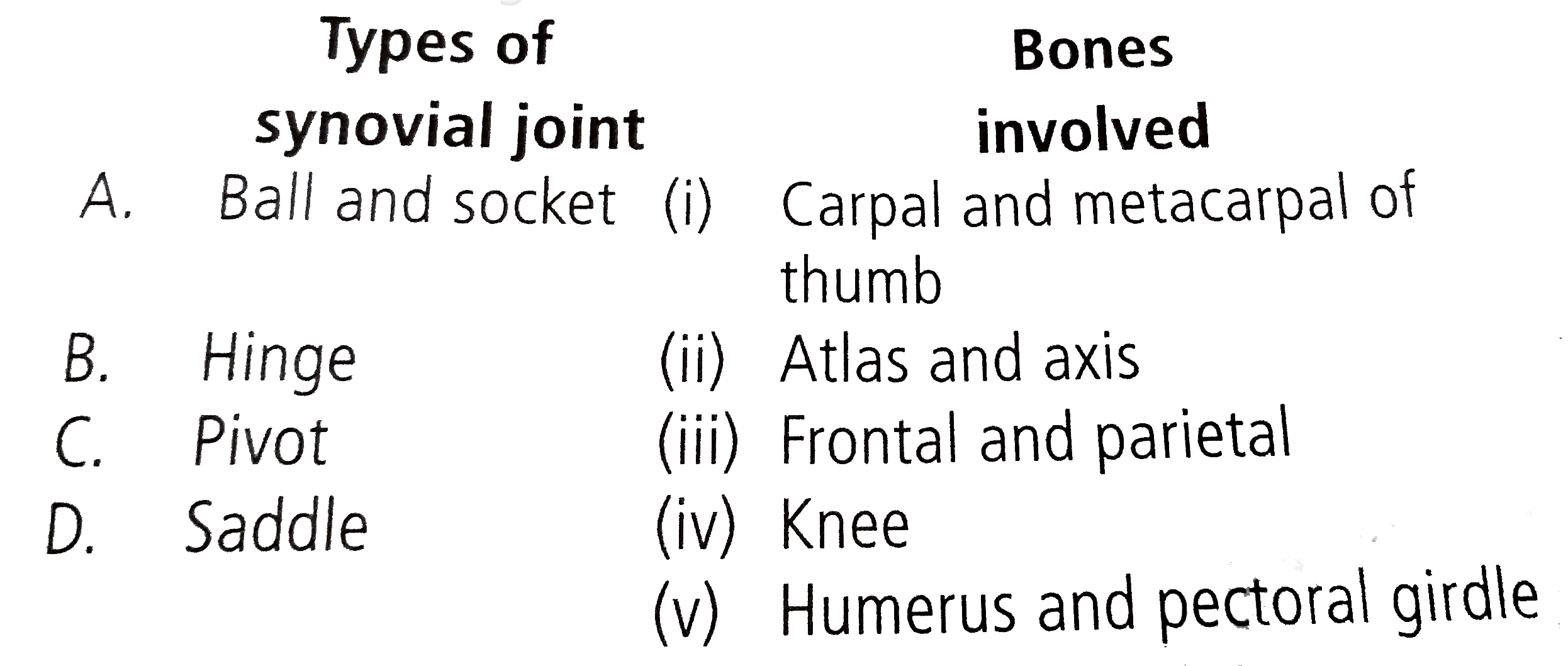Match the correct option from A and B.
Bacterium (A), Streptococcus (B)
Bacterium (A), Acetobacter (B)
Bacterium (A), Eukryota (B)
Yeast (A), Clostridium(B)
To solve the matching question between the options in Column A (Bacterium and Yeast) and Column B (Streptococcus, Acetobacter, Eukaryota, and Clostridium), we can follow these steps:
1. Identify the first option in Column A: Bacterium
- We need to find a bacterium that matches one of the options in Column B.
2. Match Bacterium with Streptococcus
- Streptococcus is a type of spherical bacteria. It belongs to the family of Streptococci and is classified under bacteria.
- Match: Bacterium - Streptococcus
3. Identify the second option in Column A: Bacterium
- We look for another bacterium to match with the remaining options in Column B.
4. Match Bacterium with Acetobacter
- Acetobacter is known for converting ethanol to acetic acid in the presence of oxygen. It is classified as acetic acid bacteria and is also a type of bacterium.
- Match: Bacterium - Acetobacter
5. Identify the third option in Column A: Bacterium
- We need to find the last bacterium to match.
6. Match Bacterium with Clostridium
- Clostridium is a genus of bacteria that is known for being gram-positive and can cause various diseases, including diarrhea. It is also classified as a bacterium.
- Match: Bacterium - Clostridium
7. Identify the last option in Column A: Yeast
- Yeast is a single-celled microorganism.
8. Match Yeast with Eukaryota
- Yeast, specifically Saccharomyces cerevisiae, is a eukaryotic organism. Therefore, it matches with Eukaryota.
- Match: Yeast - Eukaryota
Final Matches:
- Bacterium - Streptococcus
- Bacterium - Acetobacter
- Bacterium - Clostridium
- Yeast - Eukaryota
- We need to find a bacterium that matches one of the options in Column B.
- Streptococcus is a type of spherical bacteria. It belongs to the family of Streptococci and is classified under bacteria.
- Match: Bacterium - Streptococcus
- We look for another bacterium to match with the remaining options in Column B.
- Acetobacter is known for converting ethanol to acetic acid in the presence of oxygen. It is classified as acetic acid bacteria and is also a type of bacterium.
- Match: Bacterium - Acetobacter
- We need to find the last bacterium to match.
- Clostridium is a genus of bacteria that is known for being gram-positive and can cause various diseases, including diarrhea. It is also classified as a bacterium.
- Match: Bacterium - Clostridium
- Yeast is a single-celled microorganism.
- Yeast, specifically Saccharomyces cerevisiae, is a eukaryotic organism. Therefore, it matches with Eukaryota.
- Match: Yeast - Eukaryota
- Bacterium - Streptococcus
- Bacterium - Acetobacter
- Bacterium - Clostridium
- Yeast - Eukaryota
Topper's Solved these Questions
Similar Questions
Knowledge Check
Mathc column I with column II and select the correct option from the given codes.
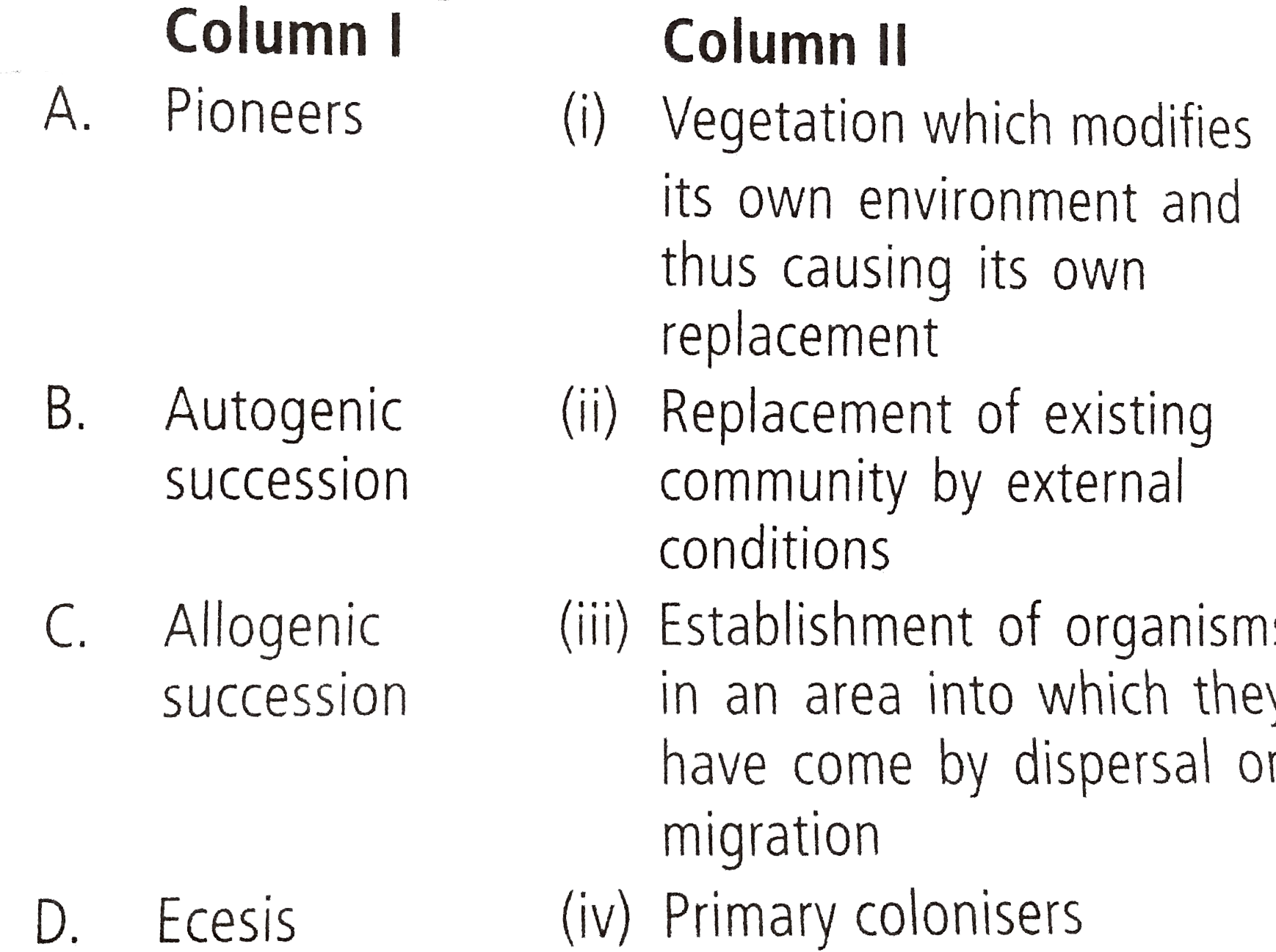 AA-(ii), B-(iii), C-(iv), D-(i), E-(v)BA-(v), B-(iv), C-(iii), D-(i), E-(ii)CA-(i), B-(iii), C-(iv), D-(ii), E-(v)DA-(i), B-(iv), C-(iii), D-(ii), E-(v)
AA-(ii), B-(iii), C-(iv), D-(i), E-(v)BA-(v), B-(iv), C-(iii), D-(i), E-(ii)CA-(i), B-(iii), C-(iv), D-(ii), E-(v)DA-(i), B-(iv), C-(iii), D-(ii), E-(v)Mathc column I with column II and select the correct option from the given codes.
 AA-(iii),B-(v), C-(iv),D-(ii)BA-(ii),B-(iv),C-(v),D-(i)CA-(ii),B-(iv),C-(v),D-(iii)DA-(iii), B-(v), C-(iv), D-(i)
AA-(iii),B-(v), C-(iv),D-(ii)BA-(ii),B-(iv),C-(v),D-(i)CA-(ii),B-(iv),C-(v),D-(iii)DA-(iii), B-(v), C-(iv), D-(i)Match column I and II and select the correct option from the given codes.
 AA-(iii),B-(iv),C-(i), D-(v), E-(ii)BA-(iii),B-(i),C-(iv), D-(v), E-(ii)CA-(iii),B-(iv),C-(v), D-(i), E-(ii)DA-(ii),B-(iv),C-(i), D-(v), E-(iii)
AA-(iii),B-(iv),C-(i), D-(v), E-(ii)BA-(iii),B-(i),C-(iv), D-(v), E-(ii)CA-(iii),B-(iv),C-(v), D-(i), E-(ii)DA-(ii),B-(iv),C-(i), D-(v), E-(iii)
